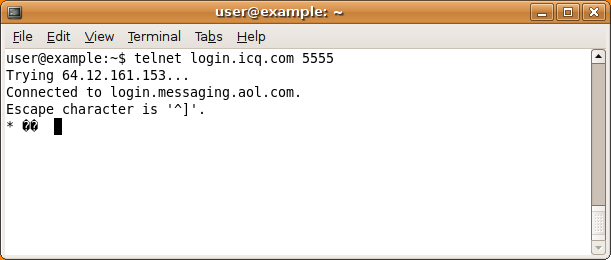Dealing with Port Blocking
Network firewalls can be used to block all communications that are directed to a particular port number. This can be used to try to prevent the use of a particular protocol or kind of network software. To try to circumvent these restrictions, ISPs and users could arrange access to services at non standard port numbers. This allows software to circumvent simple port blocking.
Many software applications can easily be made to use non standard port numbers. URLs for web pages have a particularly convenient way of doing this right inside the URL. For example, the URL http://www.example.com:8000/foo/ would tell a web browser to make an HTTP request to example.com on port 8000, rather than the default http port 80. Of course, this will only work if the web server software on www.example.com is already expecting requests on port 8000.
Testing for port blocking
You can test which ports (if any) are blocked on your connection using Telnet. Just open a command line, type "telnet login.icq.com 5555" or "telnet login.oscar.aol.com 5555" and press Enter. The number is the port you want to test. If you get some strange symbols in return, the connection succeeded.

If, on the other hand, the computer reports that the connection failed, timed out, or was interrupted, disconnected, or reset, that port is probably being blocked. (Keep in mind that some ports could be blocked only in conjunction with certain IP addresses.)





